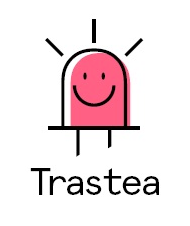
This project seeks to promote robotics and programming in schools and the generation of collaborative spaces to recognize and value the importance of technology in society.
Trastea.club (http://www.trastea.club/) is a framework project of DeustoTech Learning (DTL) - Faculty of Engineering, which integrates several initiatives and projects aimed at increasing interest in the STEM (Science, Technology, Engineering and Mathematics) areas of boys and girls in primary and secondary education.

Trastea aims to help students look for and think about technological solutions to real problems of daily life through the learning of computational thinking. Computational thinking is a competence that allows us to identify everyday problems and apply computational techniques and procedures to solve them.
Some of the skills associated with the development of computational thinking are the following: perseverance (solving a problem in different ways), communication (expressing ideas and listening to the opinions of others), collaboration (jointly finding the best solution), entrepreneurship (identifying environmental problems and solving them), autonomy (overcoming the fear of error), creativity (finding the most effective and efficient solution), attention (focusing on the problem), understanding (understanding the problem).
Computational thinking can be worked on from many perspectives and in different educational areas. Programming and robotics are examples of educational resources that allow us to put into practice problem solving and training of other skills such as logic, definition of algorithms, decomposition of problems, search for models or patterns, abstraction, self-evaluation, etc.
Learning Objectives:
-
The formulation of problems based on the exploration and observation of everyday situations, seeking answers through the manipulation of digital resources.
-
The development of different hypotheses to solve a real-world problem, identifying the steps to follow and their organization, and experimenting with error as part of the process, in order to construct an orderly sequence of actions.
-
The design, construction and debugging of programming sequences and robotics to develop problem-oriented projects.
-
The development of collaborative experiences within a framework of commitment, respect and appreciation of diversity.
Link: http://www.trastea.club/
Partnership opportunities:
|
Family |
They can participate by working at home on the problem identified and they will be shown the solutions developed. |
|
Teachers |
They will help and accompany the students throughout the project |
|
Universities or technology companies |
Universities or companies in the technology sector that teach students how to use the technology required for the prototype. They can show the software development method (analysis, design, development, testing, exploitation), HCI related issues, etc. |
|
Researchers |
They can provide data from their research on the problem to be addressed or possible solutions (engineers). They can show the method of software development, unlike industry, focusing on what can be researched around what they are developing. |
|
Public administration or business/industry |
They can intervene by helping, giving real data on the problem or contributing by addressing the problem. |
RRI Principles - Responsible Research and Innovation:
|
Governance |
Students will be able to share their projects and solutions with people or interested parties at local, regional and national level by commenting and disseminating the problem found and the solution proposed, in order to sensitize the population. |
|
Public participation |
Throughout the project different organizations will participate to enrich the results obtained in its development. In addition, the students will be in contact with other participating OSOS schools, creating a network to exchange content on technology. |
|
Gender equality
|
The problems of our environment (waste management, excess noise or light, child obesity) affect all people equally, regardless of gender. The reality of women in the field of technology (low number of vocations, invisibility of women in history, etc.) can be specifically addressed in 1-2 sessions. It would be advisable for the industry and universities involved to be gender-balanced in number. |
|
Science education |
Students will use science education to solve real problems in their environment by researching about them. The solution will be a technological solution to the problem posed. |
|
Ethics |
The students will know how to help solve the current problems of society, knowing the importance of working in team and community to help the population and the planet. They must reflect on the ethical implications of the solutions they propose, e.g. who can benefit, who can be harmed, which users are the target audience and which may be left out of the use of that development, etc. They must reflect on the ethical implications of the solutions they propose, e.g. who can benefit, who can be harmed, which users are the target audience and which may be left out of the use of that development, and so on. |
|
Open Access |
Students will develop projects to find solutions to the problem and will share them openly and free of charge to all interested people (public, families, businesses, public administrations...). |
Students age group: 6 - 9, 9 - 12, 12 - 15, 15 - 18
Subject domain: Logic and Foundations, Logic, Patterns and Sequences, ICT tools, Computer architecture, Engineering, Technology
# of students participating: 300
Updated on: 06.03.2019
 Login
Login






Comments
In order to be able to post a comment you have to be logged in to the portal. You can login or register a new account by pressing the "Login" button at the top right corner.